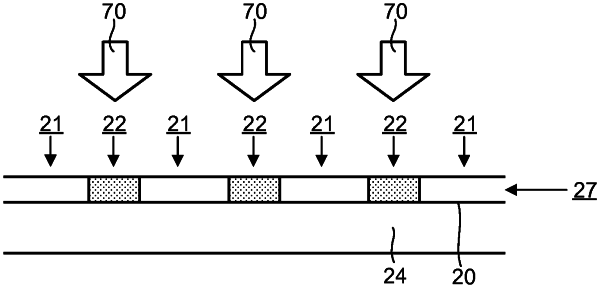| CPC C23C 16/047 (2013.01) [C23C 16/26 (2013.01); C23C 16/482 (2013.01); C23C 16/483 (2013.01); H01L 21/02527 (2013.01); H01L 21/02636 (2013.01); H01L 29/1606 (2013.01)] | 6 Claims |

|
1. A method comprising:
disposing a solid-state film on a first surface of a solid structure, the solid-state film being a carbon-containing precursor that is pentacene, polystyrene, or carbon-containing aromatic precursor molecules;
interacting an extreme ultraviolet radiation (EUV) beam with a patterning device to form a patterned EUV radiation beam;
irradiating, using the patterned EUV radiation beam, the surface of the solid structure including a selected portion of the solid-state film, wherein the patterned EUV radiation interacts with the selected portion of the solid-state film to cause the selected portion of the solid-state film to transform into an intermediate state prior to heating and wherein the selected portion is defined by the patterned EUV radiation beam; and
heating, in a presence of atomic hydrogen, the solid-state film to transform the intermediate state in the selected portion of the solid-state film into a patterned layer of carbon atoms on the first surface of the solid structure and to not transform the solid-state film outside of the selected portion into the patterned layer of carbon atoms,
wherein the atomic hydrogen acts to selectively clean away the solid-state film where the solid-state film has not been irradiated.
|